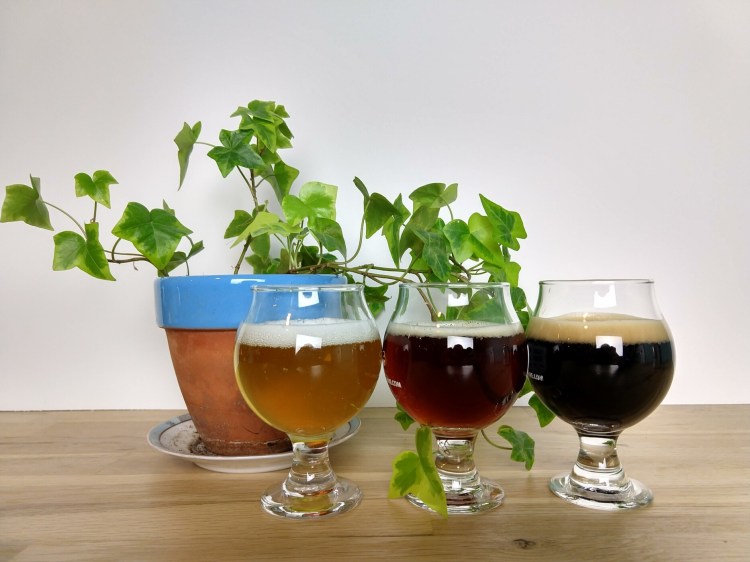The Czech Republic and its famous lagers might seem distant, but you’ll find Czech-inspired beer here in Maine. Ingredients and processes, including hops, soft water, Moravian malt and decoction mash brewing are what make these beers unique.
Czech beers feature noble or landrace hops, a grouping which includes the Czech Republic native Saaz. They are called “landrace” because they are varieties that grow naturally from the land; they weren’t bred. Hops are what give beer “terroir,” a word borrowed from the wine industry that means sense of place. Hence, a Saaz hop grown in the Czech Republic will have different attributes than one grown in the United States. Noble hops, which include Saaz, are often described as floral, perfumy, herbal, spicy and woodsy. Saaz hops play such an important part in Czech lagers that both Sacred Profane Brewing, in Biddeford, and Tributary Brewing Company, in Kittery, incorporate them in their Czech-inspired beers.
The soft water of the Czech Republic allows their beer ingredients to shine; soft water has fewer dissolved minerals. Woody Mott, the head brewer at Tributary, said that to ensure the right water profile, Tributary boils water before using it as a means to drive off any hardness.
Sacred Profane imports 100% of the hops and brewing grains it uses from the Czech Republic, according to Mike Fava, director of operations. This includes floor-malted barley from Moravia, which is in the southern part of Czechoslovakia. The barley is malted using a technique of preparing grains that he said has been around since 1842. Malt created through this method is considered “undermodified”– the malt starch is harder to convert into sugars, which yeast consume during fermentation. Which brings us to decoction mashing.
Fava defines decoction mashing as an “Old World method of converting starches in the malted barley into fermentable sugar.” A portion of the mash (a mix of crushed, malted grains and water) is pulled away from the main mash, boiled and then added back in, raising the overall temperature of the mixture. The process can be done one, two or three times. These multiple rounds of heating break down the undermodified malt.
Heating the mash also creates a Maillard reaction, which Fava said deepens the color and creates flavor compounds that improve the taste of the beer. Think of how toasting bread changes its color and flavor. The mash is similarly affected when heated. Sacred Profane’s brewing process uses the same equipment that Czech breweries use for fermenting, decoction mashing, lagering and pouring beer.
At Tributary, Mott said they use specialty malts to “provide color, flavor and dextrin (unfermentable sugars) content to enrich the brew.” Tributary’s setup doesn’t allow for decoction brewing, so these specialty malts add some of the same color and flavors that would be gained through decoction and the Maillard reaction. For example, Mott uses malt that adds flavors of caramel and graham cracker.
To learn more about Czech inspired beers, I picked up the Dark and Pale Lagers from Sacred Profane as well as Polotmavý, from Tributary Brewing Co and did a tasting. Below are my notes. I tasted the beers from lightest to darkest.

Locally made Czech-style lagers. Photo by Caitlin Enz
Sacred Profane Light Lager
Style: Czech Lager
Tasting notes: Light gold with a white head. Smells very floral and like white bread. Tastes much like it smells.
Tributary Polotmavý
Style: Czech Amber Lager
Tasting notes: Amber with a white head. Smells like toasted bread, with a hint of caramel, slightly herbal, graham cracker. Tastes like bread crust and caramel.
Sacred Profane Dark Lager
Style: Czech Lager
Tasting notes: Dark brown with a tan head. Smells like darkly toasted bread, licorice and caramel. Tastes like toasted bread with a hint of licorice.
Caitlin Enz is a Certified Cicerone® who lives in Portland. Follow her on Instagram at @hops_and_brains.
Send questions/comments to the editors.



Comments are no longer available on this story